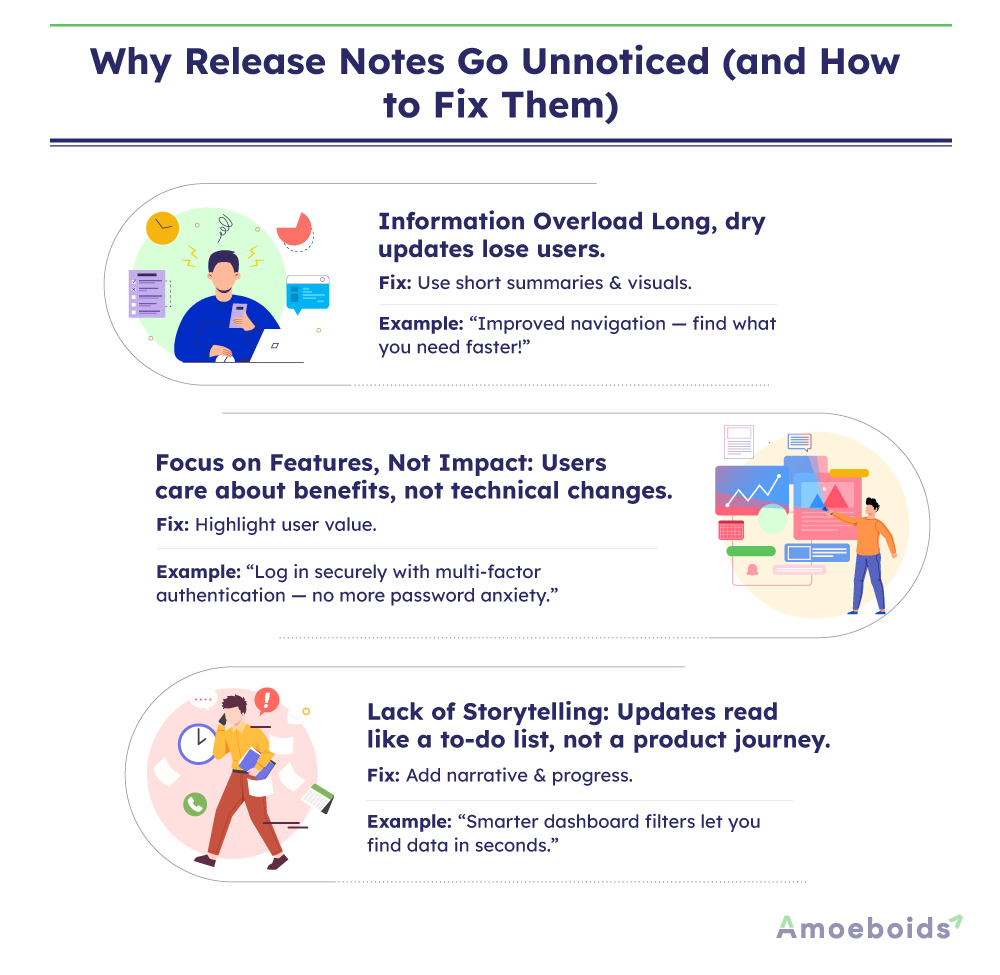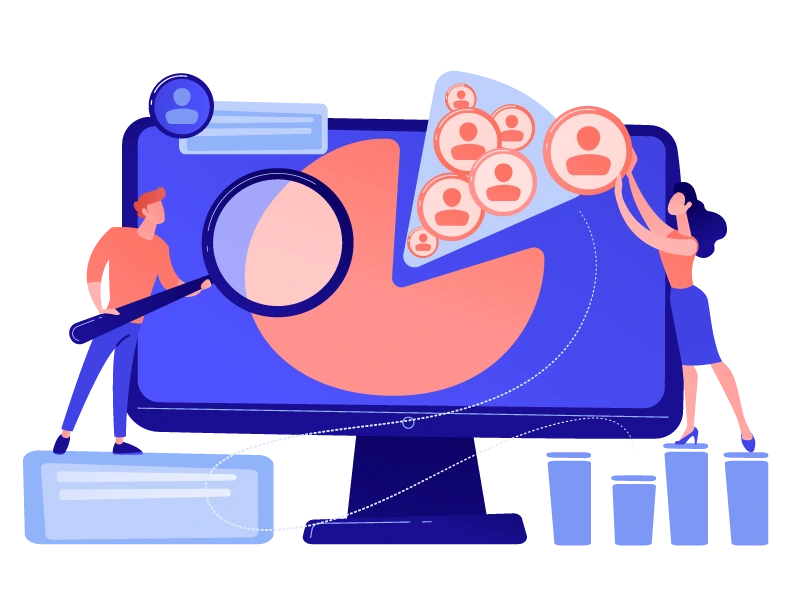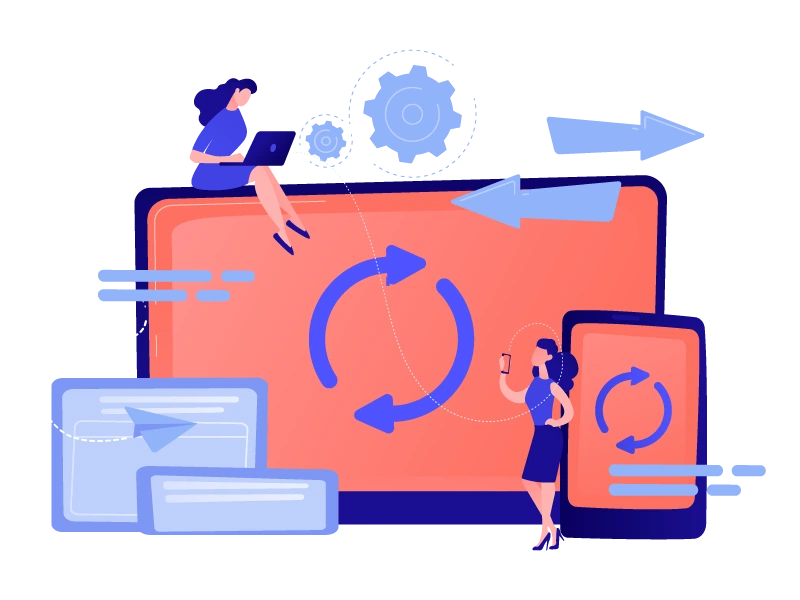Let’s be honest: How often do you read every bit of release notes? Unless something breaks.
Most people just glance through them or completely skip them.
However, release notes are the unsung heroes of software communication. They announce improvements, fixes, and new features, all of which are essential to the evolution of any product.
But here’s the catch: Even though they are important, they’re frequently overlooked. Why? Because they read more like technical laundry lists than actual updates.
So, what if your release notes could talk not metaphorically, but literally?
What if they could communicate and tell the story behind each update, explaining why the change was made and what impact it has?
In this blog, explore how release notes are evolving from boring documentation to engaging, informative, and interactive experiences.
Why Do Release Notes Go Unnoticed?
Release notes are often ignored, not due to lack of value, but because they are written for teams rather than users. Let’s figure out why they fail and how to fix them.

- Information overload—long, dry, robotic: Suppose you are a user and you are opening a release note that is conveyed to you like this:
“Version 5.3.2 — Fixed minor UI bug in module 4.”
It’s factual for teams, but it’s dull and lifeless for users. If you multiply that by 30 lines, you get noise. As of now, teams provide weekly or even daily updates, which can be difficult to understand within minutes. When all updates appear and sound the same, they lose significance. Since there is no visual or contextual hook, readers gradually begin to lose interest.
In that case, what can you do?
Example: Instead of a wall of bullet points, use visuals or short summaries like
“Improved navigation in Module 4—no more confusing menus! You’ll find what you need faster.”
A splash of personality can turn a dry changelog into a quick and enjoyable read.
- Focus on features and not user impact: Users don’t care that you “refactored backend logic.” They care that the app now loads twice as fast.
The problem? Most release notes focus on what changed, not why it matters.
Example: Instead of saying “Added support for multi-factor authentication,” say something that your users can understand, like “You can now log in more securely with multi-factor authentication; no more password anxiety.”
The second line will strike an emotional chord and immediately clarify the value to your users.
- Lack of storytelling: Every release tells a story about your product’s journey, such as small victories for your team, responses to customer feedback, or performance enhancements. However, when written mechanically, release notes read like a to-do list, not like a progress or achievement story.
Example: Instead of writing “Improved dashboard filters,” say something like “Now you can quickly find data with smarter, faster dashboard filters in seconds.”
This single sentence not only highlights the update but also reinforces your commitment to users. Adding narrative elements promotes trust, openness, and engagement.
The shift from Information to Experience
The way we communicate about releases has evolved. It is no longer about what you release, but how you distribute it to your users and different channels.
Evolution of communication
Text has been the consistent pattern for information sharing in every part of history. Teams initially relied on lengthy paragraphs of documentation. Then came screenshots, infographics, and simple demos.
Today, the transition continues in a more modern way with AI-powered video briefings that summarise Jira data in a natural and human-like format like this: Text → Visuals → Video
These brief clips deliver information in seconds, combining visuals, tone, and narrative into a single cohesive experience.
Example: A one-minute video highlighting the key benefits of a sprint provides instant comprehension and engagement, which pages of release notes often do not.
Why people remember stories, not bullet lists
Research consistently shows that when information is presented in the form of a story, humans retain it better. A brief line like “We’ve resolved that login glitch many of you reported last week” feels more personal than a generic “Login issue fixed.”
Stories change updates into experiences that are easy to remember and relate to.
Release notes as narratives, not just documentation
Release notes serve as a means of communication instead of a compliance requirement.
A short note like “Checkout is now 40% faster, thanks to feedback from our community.” communicates progress, gratitude, and value in one line. It touches your reader’s mind as well as their heart.
Experiences drive engagement more than raw data
Data tells us what, but experience explains why. A list of fixes fades quickly, but show users how life becomes easier, faster, or smoother, and they’ll remember the experience. Experiences spark connection, whereas data alone simply fills space.
Bringing Release Notes to Life
The era of dull and heavy text updates is quickly disappearing. Release notes are now about creating experiences that connect and educate, not just listing changes. Every update can communicate with your audience if it has the appropriate tone, graphics, videos, and AI.
- Conversational tone over robotic text: The release notes don’t have to sound like technical manuals. Natural language makes updates more approachable and inviting.
Example: “We fixed an issue that caused delays when exporting reports” is far more relatable than “Issue #789 resolved.”
- Adding visuals, GIFs, or contextual dashboards: A small animation or GIF can explain interface improvements much faster than a paragraph could.
When combined with contextual dashboards that display performance enhancements or adoption rates, the data becomes both informative and visually meaningful.
- Using video and voice—AI avatars or narrations: AI-generated narrations and avatars can now deliver release highlights in the same way that a teammate would recap sprint outcomes.
These video briefings changes structured data into stories quickly and effortlessly. Static text becomes dynamic dialogue.
- Contextual release pages mixing metrics and storytelling: A modern release page does not simply describe updates. It blends analytics with narrative.
Example: “97% fewer login errors since the last update,” followed by “Thanks to your reports, this fix is live.” Readers see impact, not just data.
Producing this level of storytelling no longer requires manual effort, due to AI-powered automation. Structured data from tools such as Jira can now be changed into polished video reports or interactive pages within minutes.
Automation and the Rise of Talking Release Notes
AI and automation have changed release communication from a boring and tedious process to one that is quick, engaging, and creative. What used to take hours of editing and formatting is now done in minutes, with each update adding clarity, consistency, and personality.

1. AI-powered tools make transformation effortless
Today’s automation platforms can analyse structured release data, extract key highlights, and even create natural-sounding voiceover recordings. The goal is not to replace human creativity but to enhance it by helping teams turn raw data into compelling narratives.
2. Create video report templates directly from Jira data
Teams can create templates using integrated automation to convert each new sprint into a short, visual video summary. Each update is delivered in a clear, visual, and consistent manner, which turns previously text-heavy logs into compelling stories that users want to see.
3. Automate distribution across Slack, Confluence, or email
Once the report is complete, automation will handle the rest, automatically posting updates to Slack, Confluence, or email. Stakeholders receive information in the format they prefer, without anyone having to lift a finger.
4. Secure, consistent, repeatable sharing
Automation ensures that each update follows a consistent structure, security, and professionalism. There are no missed details and no formatting issues.
From Output to Impact: The Future of Release Communication
Release communication is no longer just about announcing what has been done; it is also about showing why it is important. The emphasis is changing to clarity, emotion, and flexibility, with each update helping users connect with the product story. This evolution brings five major changes that shape the future of release notes:
- Stronger Retention: Stories and images are remembered up to 22 times better than plain text.
- Emotional Connection: Narrated videos and humanised summaries help to make technical changes more relatable and understandable to people.
- Inclusive Communication: Updates are available in both visual and audio formats, making them accessible to everyone.
- Real Impact: Engaging communication leads to increased feature adoption, user satisfaction, and trust.
- Two-Way Conversation: Interactive notes provide an opportunity for feedback, transforming one-way updates into meaningful discussions.
Conclusion
Not only can you read the best release notes, but you can also hear, see, and feel them. Creating engaging narratives out of static documentation changes how users perceive the story of your product.
Teams should try using short explainer videos, conversational tones, or AI-generated summaries that make release updates come to life. The intention is to make communication as human as the people who are reading it.
Release notes are now frontline accounts of product evolution that show progress, intent, and care. They are no longer merely background information.
When your release notes start talking, your users begin to listen.
So, are you interested in making your release communication more human?
Explore and understand how the Automated Release Notes & Reports app for Jira can help you turn every update into a story that speaks.



